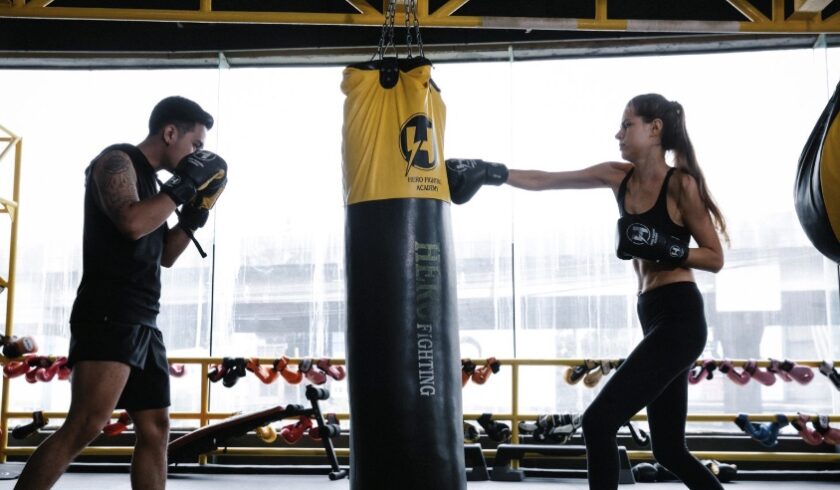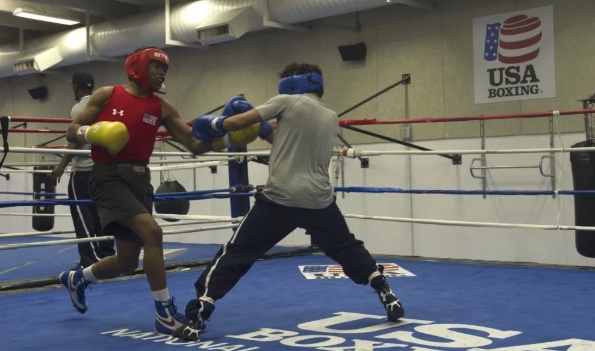Behind the Scenes of a Professional Boxing Training Camp

The really superfierce battles that go down in the ring are what everyone is always buzzing about when it comes to pro boxing. Still, the real key to a fighter’s success can be found in the spartan vibes of a training camp, far away from all the cheers and bright lights.
We’re going to find out how a boxer camp really works in this behind-the-scenes peek, with all the sacrifice, blood, and sweat it takes to make it. Learn how professional boxers are shaped by their strict routines, psychological preparation, and rigorous lifestyles.
The Structure of a Professional Boxing Training Camp
From the outside, a pro boxing training camp may look like just a lot of sparring and hitting the bags. But in reality, behind that tough vibe is a super organized and highly systematic setup—one that handles every part of a boxer’s rise to stardom. Let’s review it in detail.
Phases of Training Camp Preparation
A professional boxing training camp is carefully planned to get combatants ready for the demands of fighting on all levels—mentally, physically, and strategically. It is divided into discrete stages, each serving a particular function.
- Pre-camp conditioning is the period of preparation before the camp’s formal start. Here, establishing a strong foundation of fitness is the aim. To make sure athletes’ bodies are prepared for the demands of the later stages, fighters strive to increase their overall strength, stamina, and endurance. Long-distance jogging, light sparring, pad work to hone fundamental technique, and other exercises are the main focus.
- The emphasis switches to honing technical abilities and assessing the opponent’s style in the following phase. To find their opponent’s flaws and modify their own tactics, fighters watch videos of their impending opponent.
- The third stage of training is the most demanding and frequently the most taxing on a fighter’s physique. The goal is to reach optimal conditioning and guarantee that the athlete can fight at a high level for the entire match. High-intensity interval training, challenging sparring sessions that mimic actual fight situations, and intricate drills that integrate technique and conditioning are all things that fighters do.
- Training volume and intensity are reduced as the bout draws near to give the combatant time to recuperate both physically and mentally. The final stage is all about maintaining and honing sharpness without going overboard.

Importance of Routine and Discipline
The foundation of any good boxing training camp is based on routine and discipline. All aspects of preparation—technique, training, and recovery—are all meticulously covered by a strict regime.
A boxer needs discipline to stay motivated during demanding training sessions and to maintain the right attention to specifics like rest, diet, and attitude. Boxers following a regimen develop habits to deal with pressure.
Key Elements of a Boxer’s Training Regimen
A boxer’s training program is a meticulously planned strategy intended to improve their abilities, optimize their physical performance, and fortify their mental fortitude. Let’s examine it in more detail.
Conditioning and Endurance Training
To increase their aerobic and anaerobic ability, boxers perform strenuous cardiovascular activities like roadwork, high-intensity interval training, and skipping rope.
Circuit-style drills, which combine intense exercises like burpees, medicine ball smashes, and shadowboxing for specified intervals, are frequently a part of endurance training.
Technical and Tactical Training Strategies
A boxing camp must include both tactical and technical instruction.
Technical training is geared toward mastering the execution of punches, footwork, defense, and general body mechanics. Punching combinations, timing, and accuracy are improved through drills including heavy bag training, shadowboxing, and pad work with a coach. In addition to maximizing power, proper technique eliminates lost energy and lowers the chance of damage.
Through ring generalship, strategy adjustment, and weakness analysis, tactical training teaches fighters to outsmart their opponents. Here, sparring is essential since it mimics actual combat situations and aids fighters in honing their mental control, timing, and flexibility. Coaches also place a strong emphasis on combat analysis, in which boxers research the fighting techniques of their rivals.
Sparring Sessions and Key Training Partners
An essential component of any boxing training camp is sparring sessions. Training partners are equally significant since they help athletes reach their maximum potential. Let’s examine how these elements contribute to increased self-assurance and ring preparation.
Selecting the Right Sparring Partners
To enable realistic preparation, sparring partners should closely resemble the size, fighting style, and skill level of the impending opponent. Keeping things varied and exposing the athlete to various methods and approaches will help them become more adaptive.
In order to avoid needless injury or exhaustion, these partners must find a balance between pushing the fighter and encouraging development. Respect for one another, professionalism, and communication are essential.

Simulating Opponents’ Styles
As we’ve already discussed, training to mimic the fighting methods of opponents is one of the best ways to get ready for a fight. This entails picking sparring partners who can mimic the opponent’s pace, mobility, and tactics.
Coaches frequently study their opponents’ fights and create sparring conditions that match their strengths and weaknesses in order to increase realism.
Adjusting Strategies Based on Sparring
One can learn a lot about a boxer’s abilities and areas for development by watching how they respond to pressure, defend against particular attacks, or seize opportunities during sparring sessions.
Coaches can improve methods, combos, and strategies to better match the opponent’s expected style by examining sparring footage. This dynamic method guarantees that boxers have a customized and proven strategy when they get into the ring.
Role of Nutrition and Recovery in Training
The foundations of success in a boxing training camp are recovery and nutrition. A healthy diet helps muscle recovery, improves performance, and feeds rigorous training sessions. Let’s find out how boxers control their nutrition.
Customized Meal Plans and Supplements
Customized meal programs and supplements are crucial for reaching fitness objectives in a boxing training camp. Weight class, training intensity, and individual objectives, like gaining lean muscle mass or losing weight, are all taken into account when creating a nutrition plan for a fighter.
When needed, supplements such as protein powders, electrolytes, multivitamins, and omega-3 fatty acids can be added to the diet to help athletes achieve their nutritional needs during periods of hard training.
However, in order to comply with anti-doping laws and prevent needless dependence, coaches and nutritionists frequently provide guidance on supplement use.
Recovery Techniques and Injury Prevention
Injury prevention and recovery methods are just as important as the actual training. Because boxers strain their bodies to the breaking point, organized recuperation is crucial to preventing weariness.
To ease muscle discomfort and increase flexibility, recovery techniques include foam rolling, stretching exercises, cold therapy (such as ice baths), and sports massages. It also emphasizes getting enough sleep.
Strength-conditioning workouts, frequent mobility drills, and appropriate warm-ups are all incorporated into training plans to help prevent overuse injuries and strengthen weak regions. It is imperative to use protective gear, practice good sparring technique, and pay close attention to form during exercises.
Mental Conditioning and Focus
Together with physical strength, mental fitness is a fundamental component that equips athletes to handle obstacles both inside and outside of the ring.
Mental drills are included in rigorous training sessions to improve resilience and focus. By using visualization techniques, fighters may practice every punch and maneuver. Boxers are taught to maintain composure through the use of mindfulness and meditation techniques.
Furthermore, a good mental game fosters tenacity and resolve. In order to help athletes overcome mental obstacles, coaches stress the value of positive self-talk.
Betting Insights: How Training Camps Influence Fight Outcomes
Knowing the subtleties of a fighter’s camp gives bettors important information about how to forecast fight results. Let’s investigate that!
Evaluating a Fighter’s Training Camp Performance
Evaluating a fighter’s training camp is essential for bookmakers. Keep an eye on indicators of readiness, such as good sparring, weight control, and injury reports. Problems may be indicated by disruptions such as inability to concentrate or cancelled sessions. You can learn important things about a fighter’s potential performance during the fight night by examining these variables.
Key Indicators Bettors Look For
To determine how a training camp affects fight results, bettors, especially those betting on 1xBet, look at a number of important indications. These include the fighter’s level of conditioning, technique advancements, mental focus, sparring partner quality, and injury reports. Changes in training facilities or coaching personnel may also indicate modifications that could affect their performance.
Impact of Training on Betting Odds
Training camps have a big impact on betting odds since they mold a fighter’s preparedness. Positive reviews, like being in top physical shape or having excellent preparation, can increase boxers’ winning chances. However, probabilities tend to wander when there are indications of inadequate training, injuries, or diversions. Astute wagerers keep a careful eye on these specifics in order to profit from changes before the market completely reflects them.
Conclusion
A professional boxing training camp is a rigorously planned and regulated procedure that prepares fighters for every facet of a fight. It is much more than just a string of strenuous exercises. Every phase is essential to developing a boxer’s mental and physical toughness, from the early phases of training to the strategic analysis of an opponent. Fighters are shaped into champions prepared to take on the ultimate test in the ring via unflinching focus, determination, and demanding routines.
Spotted something? Got a story? Email: [email protected]
Latest News
